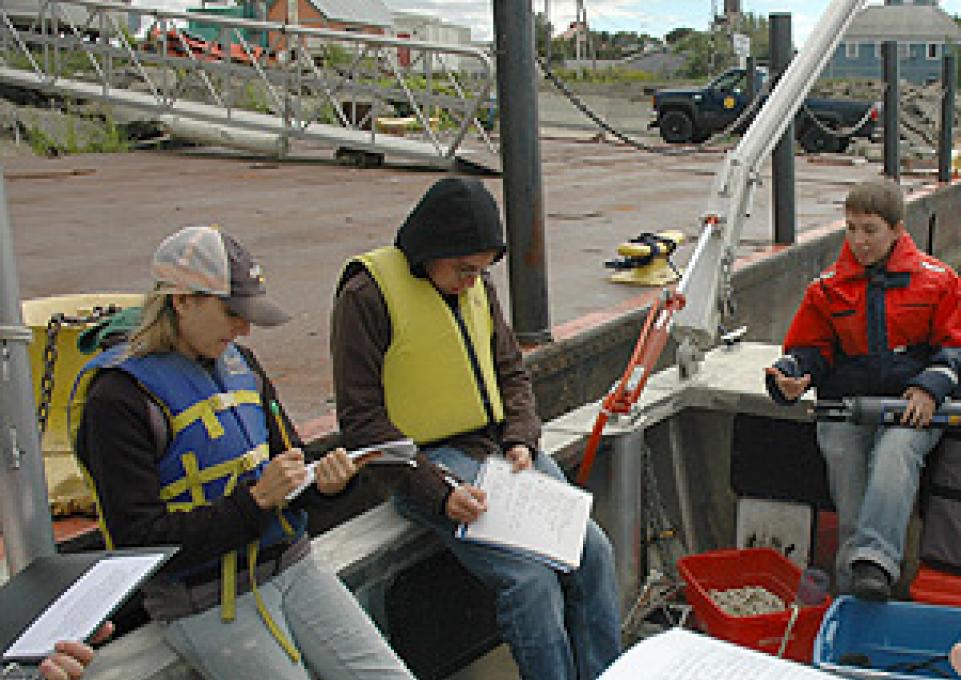
 Lake Mendota in Wisconsin is one of the world’s most studied lakes, according to Alexander Y. Karatayev (top left photo), director of the Great Lakes Center at Buffalo State. Two prominent scientists—Chancey Juday and Edward Birge, who served as the president of the University of Wisconsin—pioneered the science of limnology (the study of inland waters) there.
Lake Mendota in Wisconsin is one of the world’s most studied lakes, according to Alexander Y. Karatayev (top left photo), director of the Great Lakes Center at Buffalo State. Two prominent scientists—Chancey Juday and Edward Birge, who served as the president of the University of Wisconsin—pioneered the science of limnology (the study of inland waters) there.
From 2002 to 2007, Karatayev and a team of scientists including Lyubov E. Burlakova (bottom left photo), research scientist with the Great Lakes Center, added to the data that has been collected since 1914. Karatayev and his team collected more than 300 samples from specific sites on the bottom of the lake. They then used multivariate statistical analyses to study the lake’s benthic communities—the aquatic animals living at the lake’s bottom.
 “We find very different species now than those that were there 100 years ago,” said Karatayev. However, the change was not slow and progressive. Instead, the benthic community was made up of similar species from 1914 to about 1951. And the composition of the community now there has been relatively stable since the mid-1960s.
“We find very different species now than those that were there 100 years ago,” said Karatayev. However, the change was not slow and progressive. Instead, the benthic community was made up of similar species from 1914 to about 1951. And the composition of the community now there has been relatively stable since the mid-1960s.
“From 1951 to 1967,” said Karatayev, “there was a big change in the benthic communities at all depths.” The period in question saw the expansion of agriculture in nearby farmland; a population growth in metropolitan Madison; an increase in the application of fertilizers and pesticides; and the introduction of Eurasian watermilfoil, an invasive aquatic plant that can grow to 30 feet in length.
The findings, detailed in “Change in a lake benthic community over a century: evidence for alternative community states,” were published in Hydrobiologia: The International Journal of Aquatic Sciences in January 2013. The article details both the methods of data collection and the statistical tools used to determine and compare the composition of the communities.
“Benthic species live longer than other aquatic invertebrate species, and they can indicate what happened over time,” said Karatayev. Such species include crustaceans such as crayfish; mollusks such as clams; aquatic worms; and certain insects, including mayflies, during the immature phase of their lives.
“A benthic community can provide a lot of information,” said Karatayev. “It may be hard to convince people it’s worthwhile to study the well-being of benthic worms, but the presence of the particular benthic species may indicate the quality of the water.”
